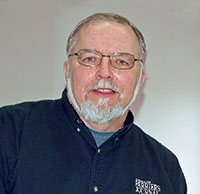I’m currently working on writing a Shoeing For A Living article for the May/June issue of American Farriers Journal. Red Renchin and I spent 1 day and part of another, with Jimmy Gore, a shoeing veteran of 39 years, who lives and works in the Baton Rouge, La., area.
I keep a list of the SFL articles I’ve done in my nearly 13 years at the magazine. The Gore article will be my 55th. The first was with Monica Hoff, a farrier from Green Bay, Wis. I spent a day with her in the Appleton, Wis., area, just after Thanksgiving in 2000. The article appeared in the Jan./Feb. issue the following year.
The day I spent in Louisiana marked the 30th state I’ve visited for a Shoeing For A Living article. I’ve also done one in Ontario, so I’ve got 20 states and nine Canadian provinces to go (although I suspect Editor/Publisher Frank Lessiter will probably decide his own talents need to be involved if I suggest it’s time for a Shoeing For A Living in Hawaii).
Lesson Learned Along The Way
I can honestly say that I’ve enjoyed every one of these days in the field. My farrier hosts all went out of their way to make my day educational. I’ve started going back and reading through some of the older stories with an eye toward sharing some of the lessons I learned on those days.
One point I’ve always remembered came from Jamey Carsel, who is now the resident farrier at Iowa State University. Back in the fall of 2003, Carsel was shoeing out of Carthage, Mo. He’d been shoeing full-time for about 10 years at that time, after making a career change from being a plumber.
Carsel identified five key areas he felt were needed to be a successful farrier. They were:
- You need to be a good businessperson.
- You need to have good people skills.
- You need to have a certain level of craftsmanship.
- You have to make a commitment to continuing your education.
- You have to present a good professional image.
“I always tell guys who ride with me that if you find a guy who’s having trouble making it and you really look hard at what he’s doing, he’ll be falling down in at least one of those areas,” Carsel explained.
Take A Look
Carsel would be the first one to tell you that these concepts are far from original, but he was one of the first farriers I rode with who packaged them together so succinctly.
So if your farrier career isn’t quite where you want it to be, try breaking it down into these five areas and see if there’s one where you aren’t attaining the levels you need. If you decide you’re coming up short in any area, put together a self-improvement plan for it.
Seeing just where a farrier is “falling down” is relatively easy when you’re looking at how someone else does his or her business. An honest self-assessment is a lot harder. But it can pay off.
After all, there’s nothing really wrong with falling down — so long as you get back up and try again.







